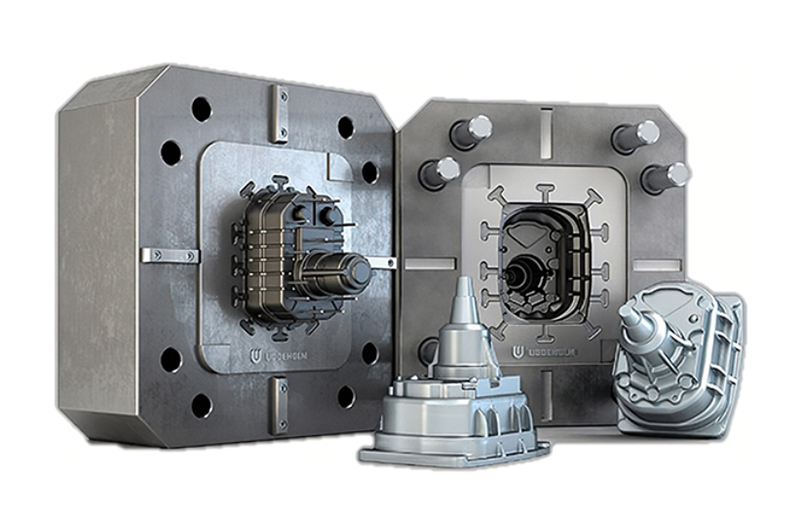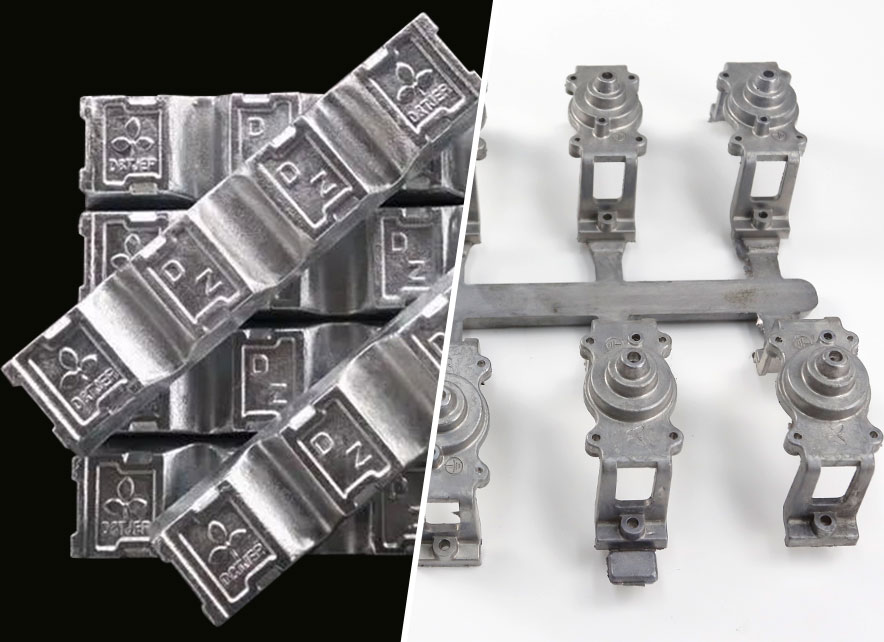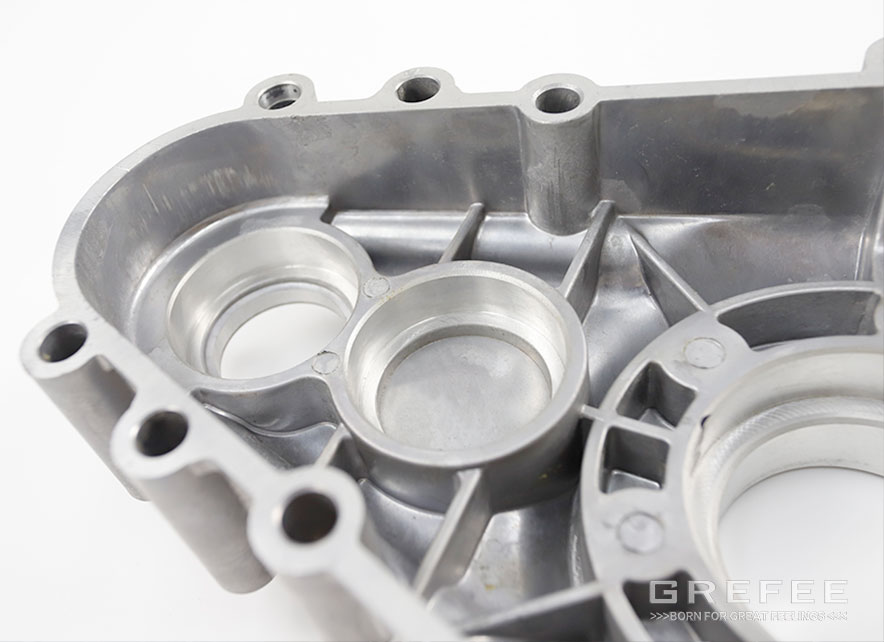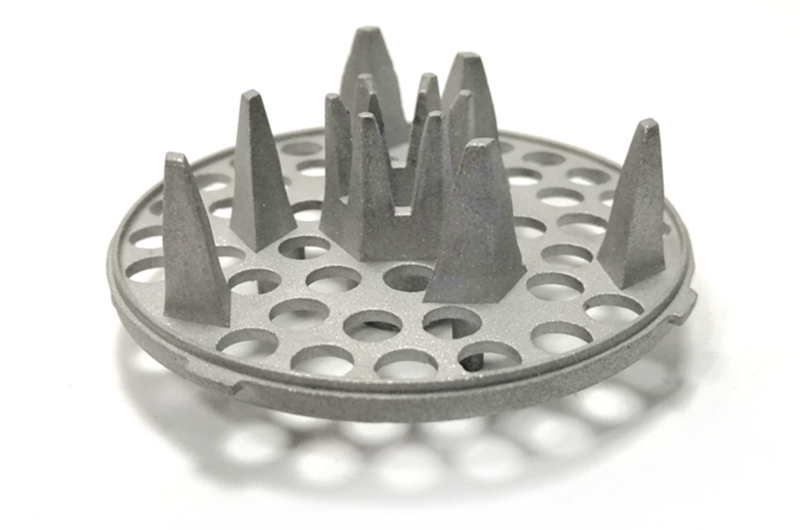Common Surface Treatments of Magnesium alloy parts

Posted on : May20, 2022 By GREFEE
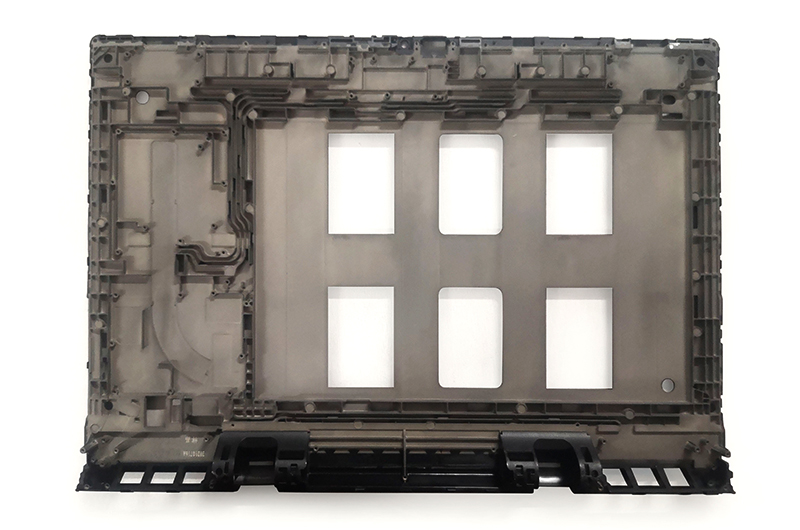
Magnesium is widely used in aerospace, automotive, and electronic product shells due to its low ratio, high specific strength, stiffness, great shock absorption, electromagnetic shielding, good recycling, etc. It has a huge development and application potential. The development of magnesium alloy is limited since it is easy to be eroded in humid and coastal areas, which results from its chemical and electrochemical activity. Therefore, some methods have been researched for many years and help enhance the corrosion resistance and extend the service life.
Increasing the corrosion resistance of magnesium alloy will control the composition of the magnesium and form a uniform structure. However, this protection procedure often needs surface treatment. It needs every surface treatment to obtain a self-protective passive film. So far, multiple surface treatments applied to the surface protection of magnesium alloy can change its properties, expand its application fields, and extend its service life. Several common surface treatments of magnesium alloy are:
Chemical transition
The chemical conversion film of magnesium can be classified according to the solution, including the dichromate system, permanganate system, phosphate system, KMnO4 system, rare earth element system, stannate system, etc.
The traditional dichromate film has a compact structure with Cr as the skeleton. Cr with structural water has an excellent recovering function with high corrosion resistance but high toxicity. High toxicity increases the wastewater management cost. So, chromium-free conversion treatment development is an inevitable trend. Magnesium alloy in KMnO4 can obtain chemical conversion film of amorphous organisms of which the corrosion resistance is equivalent to that of dichromate film. The chemical transition of the basic stannate can work as the pre-treatment of the electroless nickel plating on magnesium alloy, the alternatives of the technology that contain harmful ions such as Cr, for CN. The porous structure of the chemical transition film shows good absorption in the activation before plating and can improve the adhesion and corrosion resistance of the nickel coating.
The conversion film obtained by permanganate treatment can have comprehensive properties such as corrosion protection, optics, and electronics in the meantime. It plays an indispensable role in the new development of chemical conversion treatment and meets the requirements of RoHS environmental standards.
The chemical conversion film is a soft, thin, and weak protective force, mainly used for decoration and the intermediate layer of the protective layers.
Anodic oxidation
Anodic oxidation has base coatings with better wear and corrosion resistance than the chemical transition and also has good bonding force, electric insulation, and thermal shock resistance, so it is one of the commonly used magnesium alloy surface treatment technologies.
The electrolyte of traditional magnesium alloy anodizing contains chromium, sulfur, phosphorous and other elements. These toxic ions not only pollute the environment but also are harmful to our health. In recent years, the newly developed oxide film obtained from environmental technology has significantly improved the corrosion resistance compared to the traditional ones Dow17 and HAE. The excellent corrosion resistance comes form the distribution of the Al, Si and other elements on the surface after anodic oxidation, making the formed oxide film has good compactness and integrity.
Generally, the holes that existed in the oxide film are the primary factor affecting the corrosion resistance of magnesium. It is found that adding an appropriate amount of Silicon aluminum sol into the anodizing solution can improve factors like thickness and density and reduce the porosity to some extent. The composition of the sol will make the film-forming speed increase rapidly and slowly. However, it does not affect the X-ray diffraction phase structure of the film.
While the anodic oxide film is brittle and porous, so it’s difficult to get a uniform film on complex workpieces.
Metal coating
Magnesium and magnesium alloy are metals that are hard to plate, which are due to:
(1). the magnesium alloy surface is more likely to form magnesium oxide, which is hard to clean, affecting the bonding force of the coating adhesion.
(2). the electrochemical properties of magnesium are high, all acid bath will lead to the quick erode of the magnesium base, or the coating is loosely bonded after replacement, or the substitution reaction with other metal ions is strong.
(3). the second phase(such as rare earth phase γ Equal) have different electrochemical characteristics, leading to uneven deposition.
(4). the standard potential of coating is far higher than the magnesium alloy base. Any through holes will magnify the corrosion electric flow, causing severe electrochemical corrosion. However, the electrode potential of magnesium is negative, and the hydrogen evolution from pinholes during plating is unavoidable.
(5). the density of the magnesium alloy castings is not high, and the surface often contains impurities, which might be the cause of the coating porosity.
Thus, it generally adopts the chemical conversion film to dip zinc or manganese first, then copper plating. After that, the other electroplating or chemical plating treatment can be processed to increase the adherence to the plating. Magnesium alloy electroplated coatings include Zn, Ni, Cu Ni Cr, Zn Ni, and other coatings. The chemical coatings are mainly Ni-P, Ni-W-P, and other coatings.
The single electroless nickel plating sometimes cannot protect magnesium alloys. Some researchers combined the chemical plating Ni layer with the alkaline Zn-Ni plating. Around 35μm thick plating can bear 800-1000h neutral salt spray corrosion after the passivation. There is also someone who uses the electroless nickel plating as the base layer and then obtains the microcrystalline nickel coating with the direct current nickel plating. The average size of the crystalline particle is 40nm, so the grain refinement greatly reduces the porosity of the coating and makes the structure more compact.
Electroplating or chemical plating is the surface treatment that can obtain excellent surface treatment with corrosion resistance, electrical, electromagnetic, and decorative properties. The disadvantage is the environmental pollution caused by the Cr, F, and plating solution. The most coating has many heavy metal elements, increasing the difficulties of recycling and cost. Due to the property of the magnesium matrix, the binding force is still improving.
Laser cutting
Laser cutting includes laser surface thermal treatment and laser surface alloying.
Laser surface heat treatment, also known as laser annealing, is a kind of surface rapid solidification treatment. It is a new technology based on laser surface heat treatment. Through the laser surface alloying, we can obtain alloy layers with different hardness and metallurgical bonding surfaces. Single-layer and multi-layer alloying layers can also be obtained on high-purity magnesium alloy by the cladding of a laser irradiation source.
When carrying out the Cu-Zr-Al alloy cladding coating on the surface of magnesium alloy with the broadband laser, due to the enhancement of various intermetallic compounds, the alloy coating has excellent stiffness, modulus of elasticity, wear resistance, and corrosion resistance. Due to the existence of the rare earth element Nd, the laser multilayer coating obtained after the laser rapid melting treatment, the grain is refined. Meanwhile, it can enhance the compactness and integrity of the cladding layer.
The laser treatment can deal with surfaces with complex geometrical shapes. However, the magnesium alloy is easy to be oxidized, evacuated in the laser treatment, and generates vaporization, porosity, and thermal stress. The correct design of the treatment process is vital.
In terms of the magnesium alloy industry, surface treatment is a hard nut to crack. Compared to the aluminum alloy, the surface product effect of many magnesium alloy products is not ideal. The Chinese magnesium alloy suppliers are still in the phase of continuous research, development, and exploration, which is also why magnesium alloy cannot be widely used for daily necessities. Only high-strength magnesium alloy applies to high-end products and electronic products. High cost has been one of the tough issues for the spread of magnesium. Due to the rapid development and expansion of the new energy car industry, the magnesium industry is also developing, which widens the application range of the magnesium alloy. Many magnesium alloy manufacturing enterprises have already taken the magnesium alloy surface treatment as an important project to research. New energy development is inevitable, and it also gives the magnesium alloy industry a different historical mission. We believe that with the innovation of the technology, the development of magnesium alloy will be more and more mature and become other alternatives to replace traditional metal products.
MORE BOLG
Categories

Try GREFEE now,for free
We keep your uploaded files confidential and secure.

